Um novo estudo publicado, esta terça-feira, pela revista científica Nature Communications,promete melhorar a nossa compreensão do passado, trazendo uma diferente perspetiva para o futuro.
Um grupo de arqueólogos encontrou geoglifos e vestígios de numerosas aldeias pré-colombianas, onde teriam habitado até um milhão de pessoas, há 800 anos, na Amazónia.
Na bacia do Alto Tapajós, a noroeste de Mato Grosso, longe dos rios principais, os investigadores encontraram 81 aldeias "perdidas", com vestígios de presença humana, datadas de 1250 a 1500 depois de Cristo.
Os vestígios incluem vilarejos, fortificações, cerâmicas, machados de pedra polida e geoglifos - os misteriosos desenhos na terra que, vistos do céu, formam quadrados, círculos ou hexágonos.

O grupo de investigadores visitou 24 desses lugares que descobriram através de imagens de satélite. As decobertas foram impressionantes, sobretudo ao nível das dimensões das aldeias e do número de habitantes.
Os arqueólogos descobriram pequenas aldeias com cerca de 30 metros de diâmetro, enquanto outras eram fortificações com aproximadamente 400 metros de diâmetro, contendo construções à volta de praças e estradas submersas.
O estudo conjunto entre o Brasil e Inglaterra - teve a participação de cientistas da Universidade de Exeter (Reino Unido), da Universidade Federal do Pará (UFPA), do Instituto Nacional de Pesquisas Espaciais (Inpe) e da Universidade do Estado de Mato Grosso (UEMT) - conclui que nestas terão moraram entre 500 mil a um milhão de pessoas. #
Pre-Columbian earth-builders settled along the entire southern rim of the Amazon
Abstract
Introduction
Results
General characteristics of the surveyed sites
Settlement patterns in the Upper Tapajós Basin
Cultural contents and chronology of the sites
Predicting enclosure distribution in southern Amazonia
Discussion
Methods
Satellite imagery and ground-truthing
Site-size distribution
Excavations at site Mt-04
Modelling earthwork distribution
Site density and population estimates
Regional chronologies of the SRA
Data availability
Additional information
References
- 1.Lewis, S. L. Tropical forests and the changing earth system. Philos. Trans. R. Soc. Lond. B 361, 195–210, (2006).
- 2.Bonan, G. B. Forests and climate change: forcings, feedbacks, and the climate benefits of forests. Science 320, 1444–1449 (2008).
- 3.Clement, C. R. & Junqueira, A. B. Between a pristine myth and an impoverished future. Biotropica 42, 534–536 (2010).
- 4.Barlow, J., Gardner, T. A., Lees, A. C., Parry, L. & Peres, C. A. How pristine are tropical forests? An ecological perspective on the pre-Columbian human footprint in Amazonia and implications for contemporary conservation. Biol. Conserv. 151, 45–49 (2012).
- 5.McMichael, C. H. et al. Sparse pre-Columbian human habitation in western Amazonia. Science 336, 1429–1431 (2012).
- 6.Mayle, F. E., Langstroth, R. P., Fisher, R. A. & Meir, P. Long-term forest–savannah dynamics in the Bolivian Amazon: implications for conservation. Philos. Trans. R. Soc. Lond. B 362, 291–307 (2007).
- 7.Clement, C. R. et al. The domestication of Amazonia before European conquest. Proc. Biol. Sci. 282, 20150813 (2015).
- 8.Balée, W. L. & Erickson, C. L. Time and Complexity in Historical Ecology: Studies in the Neotropical Lowlands (Columbia University Press, New York, NY, 2006).
- 9.Piperno, D. R., McMichael, C. & Bush, M. B. Amazonia and the Anthropocene: what was the spatial extent and intensity of human landscape modification in the Amazon Basin at the end of prehistory?. Holocene 25, 1588–1597 (2015).
- 10.Stahl, P. W. Interpreting interfluvial landscape transformations in the pre-Columbian Amazon. Holocene 25, 1598–1603 (2015).
- 11.Levis, C. et al. Persistent effects of pre-Columbian plant domestication on Amazonian forest composition. Science 355, 925–931, (2017).
- 12.Watling, J. et al Impact of pre-Columbian “geoglyph” builders on Amazonian forests. Proc. Natl Acad. Sci. USA 114, 1868–1873 (2017).
- 13.Roosevelt, A. C. The Amazon and the Anthropocene: 13,000 years of human influence in a tropical rainforest. Anthropocene 4, 69–87 (2013).
- 14.Piperno, D. R. & Pearsall, D. M. The Origins of Agriculture in the Lowland Neotropics (Academic Press, San Diego, CA, 1998).
- 15.Lathrap, D. W. The Upper Amazon (Thames & Hudson, London, 1970).
- 16.Meggers, B. J. Amazonia: Man and Culture in a Counterfeit Paradise (Aldine, Chicago, IL, 1971).
- 17.Walker, J. H. Pre-Columbian ring ditches along the Yacuma and Rapulo Rivers, Beni, Bolivia: a preliminary review. J. Field Archaeol.33, 413–427 (2008).
- 18.Erickson, C. L. In Time and Complexity in Historical Ecology: Studies in the Neotropical Lowlands(eds Balée, W. & Erickson, C. L.) 235–278 (Columbia University Press, New York, NY, 2006).
- 19.Pärssinen, M., Ranzi, A., Saunaluoma, S. & Siiriäinen, A. In Western Amazonia-Amazônia Ocidental: Multidisciplinary Studies on Ancient Expansionistic Movements, Fortifications, and Sedentary Life (eds Pärssinen M. & Korpisaari, A.) 135–172 (University of Helsinki, Helsinki, 2003).
- 20.Schaan, D. P. Sacred Geographies of Ancient Amazonia: Historical Ecology of Social Complexity (Left Coast Press, Walnut Creek, CA, 2011).
- 21.Heckenberger, M. J. et al. Pre-Columbian urbanism, anthropogenic landscapes, and the future of the Amazon. Science321, 1214–1217 (2008).
- 22.Heckenberger, M. J. et al. Amazonia 1492: pristine forest or cultural parkland? Science 301, 1710–1714 (2003).
- 23.Erickson, C. L. An artificial landscape-scale fishery in the Bolivian Amazon. Nature 408, 190–193 (2000).
- 24.Lombardo, U. & Prümers, H. Pre-Columbian human occupation patterns in the eastern plains of the Llanos de Moxos, Bolivian Amazonia. J. Archaeol. Sci. 37, 1875–1885 (2010).
- 25.Denevan, W. M. Cultivated Landscapes of Native Amazonia and the Andes. (Oxford University Press, New York, NY, 2001).
- 26.Prümers, H. & Jaimes Betancourt, C. 100 años de investigación arqueológica en los Llanos de Mojos. Arqueoantropológicas 4, 11–54 (2014).
- 27.Lombardo, U. Raised fields of northwestern Bolivia: a GIS based analysis. Z. für Archäol. Außereuropäischer Kult. 3, 127–149 (2010).
- 28.Erickson, C. L. In The Handbook of South American Archaeology(eds Silverman, H. & Isbell, W. H.) 157–183 (Springer, New York, NY, 2008).
- 29.Pärssinen, M., Schaan, D. P. & Ranzi, A. Pre-Columbian geometric earthworks in the upper Purús: a complex society in western Amazonia. Antiquity 83, 1084–1095 (2009).
- 30.Saunaluoma, S. & Schaan, D. Monumentality in Western Amazonian formative societies: geometric ditched enclosures in the Brazilian state of Acre. Antiqua 2, 1 (2012).
- 31.Schaan, D. et al. New radiometric dates for precolumbian (2000–700 B.P.) earthworks in western Amazonia, Brazil. J. Field Archaeol.37, 132–142 (2012).
- 32.Erickson, C. L., Álvarez, P. & Calla, S. Zanjas Circundantes: Obras de Tierra Monumentales de Baures en la Amazonia Boliviana.(Unidad Nacional de Arqueología, La Paz, 2008).
- 33.Prümers, H., Jaimes Betancourt, C. & Plaza Martinez, R. Algunas tumbas prehispanicas de Bella Vista, Prov. Iténez, Bolivia. Z. für Archäol. Außereuropäischer Kult. 1, 251–284 (2006).
- 34.Heckenberger, M. J. The Ecology of Power: Culture, Place, and Personhood in the Southern Amazon, A.D. 1000–2000. (Routledge, New York, NY, 2005).
- 35.Mann, C. C. Ancient earthmovers of the Amazon. Science 321, 1148–1152, (2008).
- 36.Heckenberger, M. in Ethnicity in Ancient Amazonia: Reconstructing Past Identities from Archaeology, Linguistics, and Ethnohistory (eds Hornborg, A. & Hill, J. D.) 57–74 (University Press of Colorado, Boulder, 2011).
- 37.Heckenberger, M. in Handbook of South American Archaeology(eds Silverman, H. & Isbell, W. H.) 941–961 (Springer, New York, NY, 2008).
- 38.Hill, J. D. & Santos-Granero, F. Comparative Arawakan Histories: Rethinking Language Family and Culture Area in Amazonia(University of Illinois Press, Urbana, IL, 2002).
- 39.Hornborg, A. Ethnogenesis, regional integration, and ecology in prehistoric Amazonia: toward a system perspective. Curr. Anthropol. 46, 589–620 (2005).
- 40.Pires de Campos, A. Breve notícia que dá o capitão Antônio Pires de Campos do gentio que há na derrota da viagem das minas do Cuyabá e seu recôncavo. Rev. Trimest. do Inst. Histótico, Geográfico, e Etnográfico do Bras. 5, 437–449 (1862).
- 41.Phillips, S. J., Anderson, R. P. & Schapire, R. E. Maximum entropy modeling of species geographic distributions. Ecol. Modell. 190, 231–259 (2006).
- 42.Phillips, S. J. & Dudík, M. Modeling of species distributions with Maxent: new extensions and a comprehensive evaluation. Ecography 31, 161–175 (2008).
- 43.Elith, J. et al. A statistical explanation of MaxEnt for ecologists. Divers. Distrib. 17, 43–57 (2011).
- 44.McMichael, C. H. et al. Predicting pre-Columbian anthropogenic soils in Amazonia. Proc. R. Soc. Lond. B 281, 20132475 (2014).
- 45.McMichael, C. H., Palace, M. W. & Golightly, M. Bamboo-dominated forests and pre-Columbian earthwork formations in south-western Amazonia. J. Biogeogr. 41, 1733–1745, (2014).
- 46.McMichael, C. N. H., Matthews-Bird, F., Farfan-Rios, W. & Feeley, K. J. Ancient human disturbances may be skewing our understanding of Amazonian forests. Proc. Natl Acad. Sci. USA 114, 522–527, (2017).
- 47.Curet, L. A. New formulae for estimating prehistoric populations for lowland South America and the Caribbean. Antiquity 72, 359–375 (1998).
- 48.Denevan, W. M. The Aboriginal Cultural Geography of the Llanos de Mojos of Bolivia (University of California Press, Berkeley, CA, 1966).
- 49.Bush, M. B. et al. Anthropogenic influence on Amazonian forests in pre‐history: an ecological perspective. J. Biogeogr. 42, 2277–2288 (2015).
- 50.Bush, M. B. et al. Holocene fire and occupation in Amazonia: records from two lake districts. Philos. Trans. R. Soc. Lond. 362, 209–218, (2007).
- 51.Bush, M. B. & Silman, M. R. Amazonian exploitation revisited: ecological asymmetry and the policy pendulum. Front. Ecol. Environ. 5, 457–465, (2007).
- 52.Piperno, D. R. The origins of plant cultivation and domestication in the new world tropics: patterns, process, and new developments. Curr. Anthropol. 52, S453–S470 (2011).
- 53.Shepard, G. H. & Ramirez, H. “Made in Brazil”: human dispersal of the Brazil nut (Bertholletia excelsa, Lecythidaceae) in Ancient Amazonia. Econ. Bot. 65, 44–65 (2011).
- 54.Denevan, W. M. A bluff model of riverine settlement in prehistoric Amazonia. Ann. Assoc. Am. Geogr. 86, 654–681 (1996).
- 55.Meggers, B. J. Amazonia: real or counterfeit paradise. Rev. Archaeol. 13, 25–40 (1992).
- 56.Schaan, D. et al. Construindo paisagens como espaços sociais: o caso dos geoglifos do Acre. Rev. De. Arqueol. 23, 30–41 (2010).
- 57.Hijmans, R. J., Cameron, S. E., Parra, J. L., Jones, P. G. & Jarvis, A. Very high resolution interpolated climate surfaces for global land areas. Int. J. Climatol. 25, 1965–1978 (2005).
- 58.FAO/IIASA/ISRIC/ISSCAS/JRC. Harmonized World Soil Database v.1.2 (FAO, Rome, Italy, and Laxenburg, 2012).
- 59.Lehner, B., Verdin, K. & Jarvis, A. New global hydrography derived from spaceborne elevation data. Eos, Trans. AGU 89, 93–43 (2008).
- 60.Kramer-Schadt, S. et al. The importance of correcting for sampling bias in MaxEnt species distribution models. Divers. Distrib. 19, 1366–1379 (2013).
- 61.Liu, C., White, M. & Newell, G. Selecting thresholds for the prediction of species occurrence with presence‐only data. J. Biogeogr. 40, 778–789 (2013).
- 62.Wüst, I. & Barreto, C. The ring villages of central Brazil: a challenge for Amazonian archaeology. Lat. Am. Antiq. 10, 3–23 (1999).
- 63.Bronk Ramsey, C. & Lee, S. Recent and planned developments of the program OxCal. Radiocarbon 55, 720–730 (2013).
- 64.Hogg, A. G. et al. SHCal13 Southern Hemisphere Calibration, 0-50,000 years cal BP. Radiocarbon 55, 1889–1903 (2013).
- 65.Goldberg, A., Mychajliw, A. M. & Hadly, E. A. Post-invasion demography of prehistoric humans in South America. Nature 532, 232–235 (2016).
- 66.Shennan, S. et al. Regional population collapse followed initial agriculture booms in mid-Holocene Europe. Nat. Commun.4, 2486 (2013).
- 67.Timpson, A. et al. Reconstructing regional population fluctuations in the European Neolithic using radiocarbon dates: a new case-study using an improved method. J. Archaeol. Sci. 52, 549–557 (2014).
- 68.IPHAN. National Register of Archaeological Sites (CNSA) (2018).
- 69.WinklerPrins, A. Locating Amazonian dark earths: creating an interactive GIS of known locations. J. Lat. Am. Geogr. 9, 33–50 (2010).
Acknowledgements
Author information
Affiliations
Department of Archaeology, College of Humanities, University of Exeter, Laver Building, North Park Road, Exeter, EX4 4QE, UK
- Jonas Gregorio de Souza
- , Mark Robinson
- , Salman Saeed Khan
- & José Iriarte
Department of Anthropology, Federal University of Pará, Belém, 66075-110, Brazil
- Denise Pahl Schaan
- , Antonia Damasceno Barbosa
- & Francisco Ruji Nakahara
Remote Sensing Division, National Institute for Space Research, São José dos Campos, 12227-010, SP, Brazil
- Luiz E. O. C. Aragão
- & Izaias Brasil da Silva
College of Life and Environmental Sciences, University of Exeter, Exeter, EX4 4RJ, UK
- Luiz E. O. C. Aragão
Universidade do Estado de Mato Grosso, Campus de Nova Xavantina, Nova Xavantina, MT, 78690-000, Brazil
- Ben Hur Marimon Jr.
- & Beatriz Schwantes Marimon




































 Monitoramento da Floresta Amazônica Brasileira por Satélite - PRODES
Monitoramento da Floresta Amazônica Brasileira por Satélite - PRODES Sistema de Detecção de Desmatamento em Tempo Real - DETER
Sistema de Detecção de Desmatamento em Tempo Real - DETER


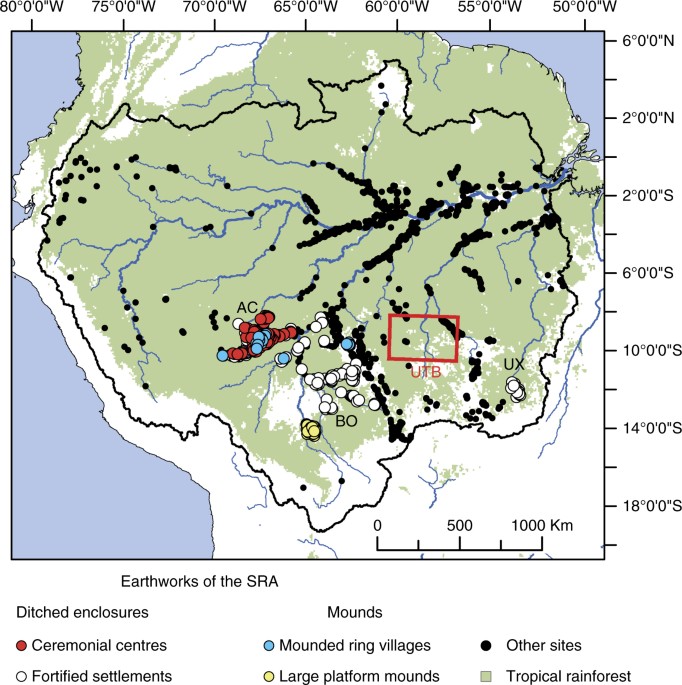
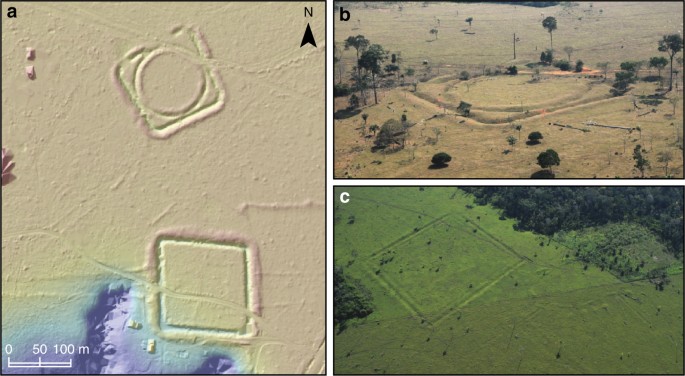
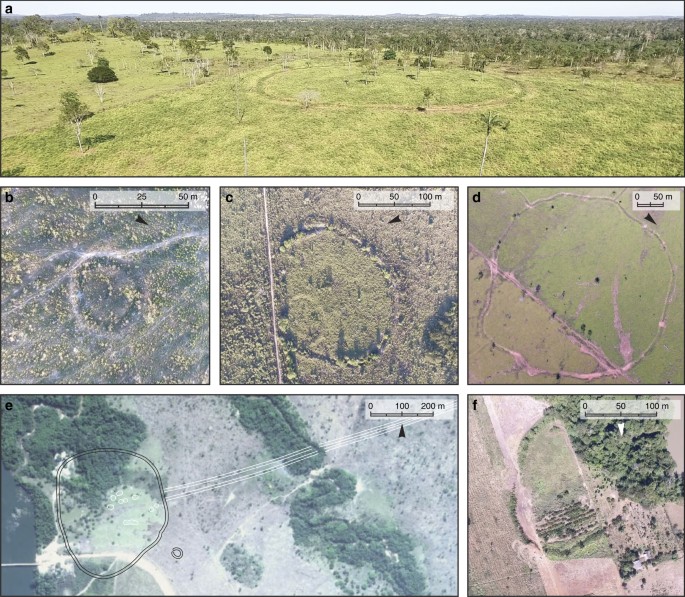
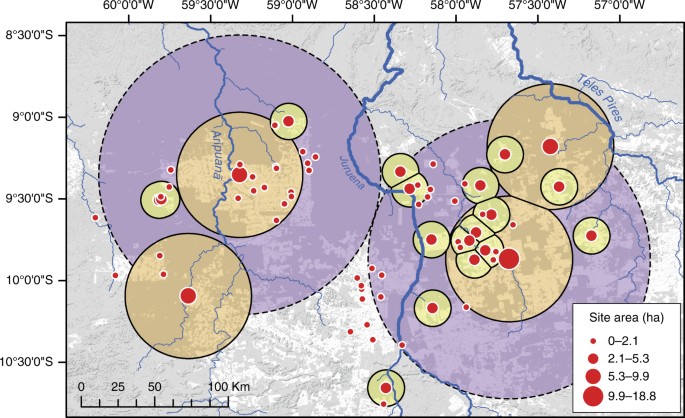
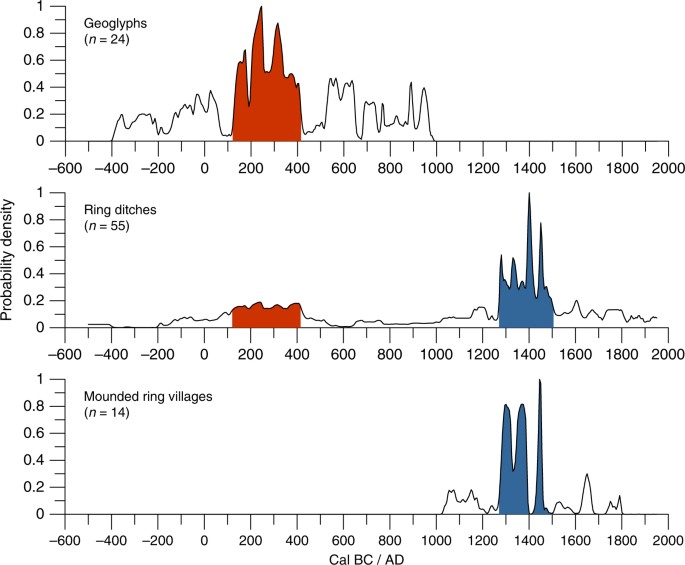
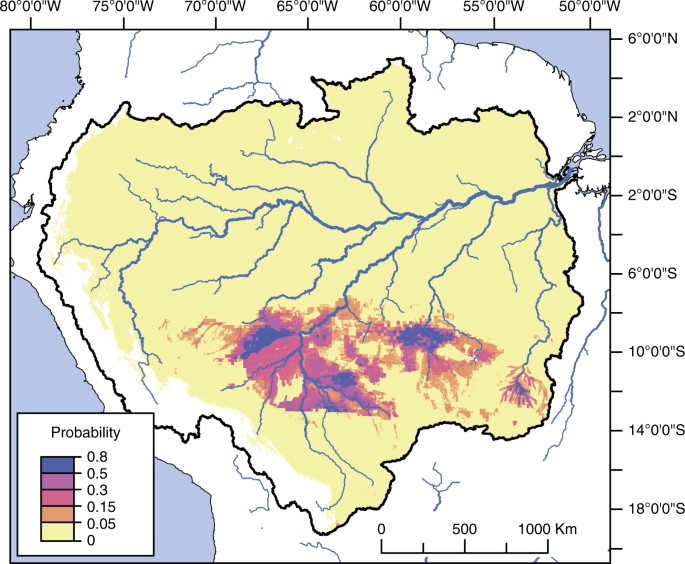
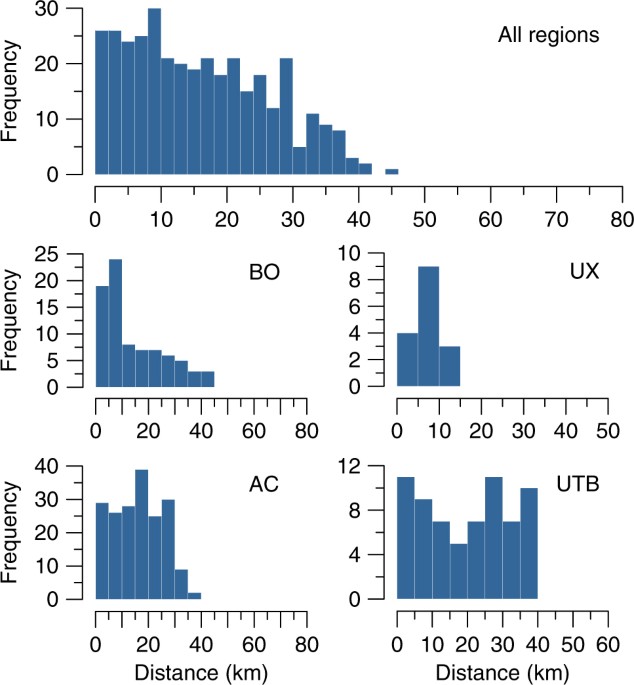
0 comentários:
Enviar um comentário